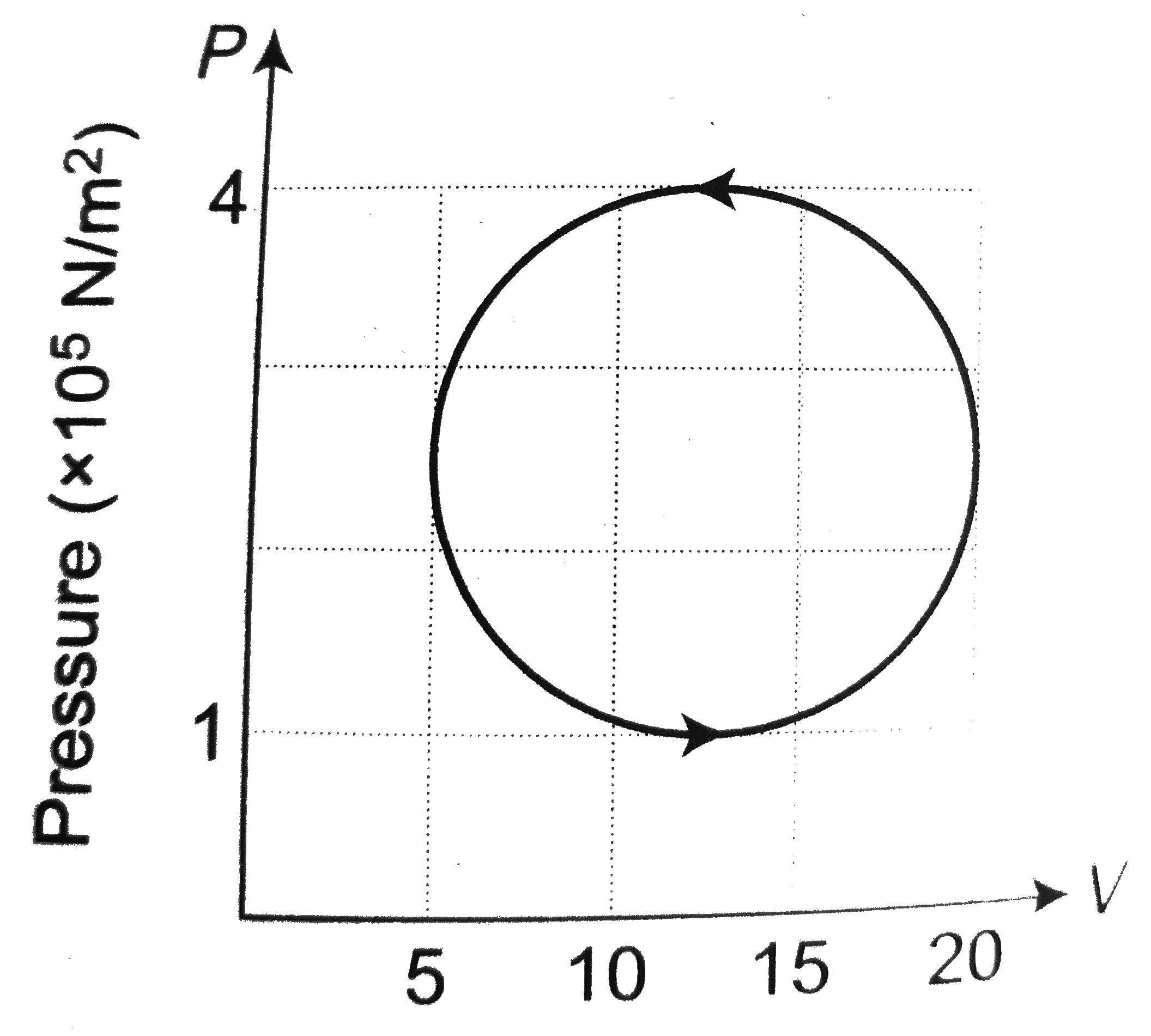An ideal gas is made to undergo the cyclic process shown in the figure below. Let △W depict the work done, △Ube the change in internal energy of the gas and Q be the heat added to the gas. sign of each of these three quantities for the whole cycle will be (0 refers to no change)

−,0−
+,0,+
0,0,0
+,+,+
The correct Answer is:A
Step by step video, text & image solution for An ideal gas is made to undergo the cyclic process shown in the figure below. Let /_\W depict the work done, /_\Ube the change in internal energy of the gas and Q be the heat added to the gas. sign of each of these three quantities for the whole cycle will be (0 refers to no change) by Physics experts to help you in doubts & scoring excellent marks in Class 12 exams.
Updated on:21/07/2023Topper's Solved these Questions
Similar Questions
Knowledge Check
An ideal gas undergoes the cyclic process shown in a graph below :
 AT1=T2BT1>T2CVaVc=VbVdDVaVb=VcVd
AT1=T2BT1>T2CVaVc=VbVdDVaVb=VcVdIn the cyclic process shown in the figure, the work done by the gas in one cycle is
 A28P1V1B14P1V1C18P1V1D9P1V1
A28P1V1B14P1V1C18P1V1D9P1V1Find the work done by gas going through a cyclic process shown in figure?
 A−225π2kJB−125π2kJC−200π3kJD−325π3kJ
A−225π2kJB−125π2kJC−200π3kJD−325π3kJ
A gas undergoes a cyclic process ABCDA as shown in the figure. The part ABC of process is semicircular. The work done by the gas is

View SolutionAn ideal monoatomic gas undergoes a cyclic process ABCA as shown in the figure. The ratio of heat absorbed during AB to the work done on the gas during BC id

View SolutionIn an adiabatic process 90 J of work is done on the gas. The change in internal energy of the gas is
View SolutionTwo moles of helium gas undergo a cyclic process as shown in figure. Assuming the gas to be ideal. The net work done by the gas is

View SolutionAn ideal gas undergoes cyclic process ABCDA as shown in givend p−V diagram. The amount of work done by the gas is

View Solution



